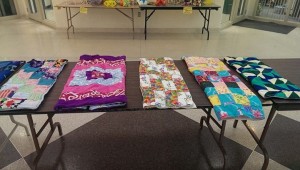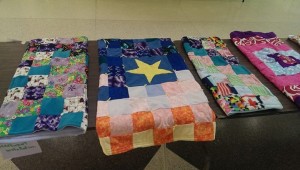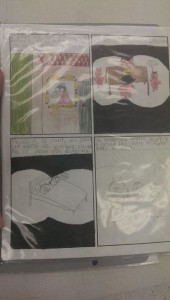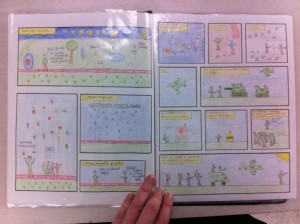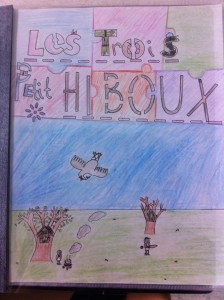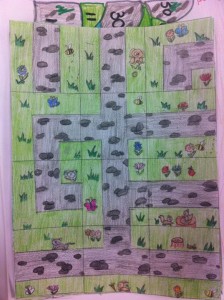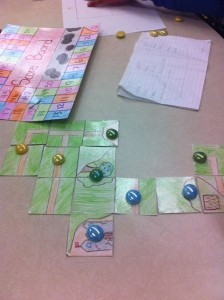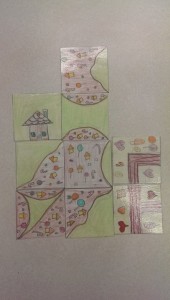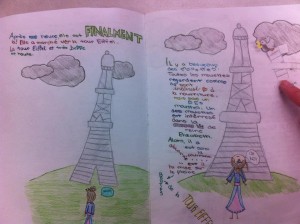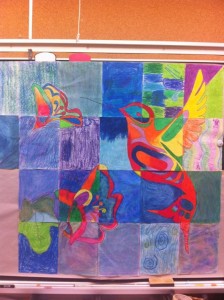Some teachers don’t give any homework, some give lots! There are lots of schools of thought on homework and if it is necessary, if it is valuable, if it serves a purpose, etc. I have had classes that had weekly homework for the whole year, and I have had classes that didn’t get homework once. It all depends on the group and what they need. I find homework is just as much for the parents as it is for the students, sometimes more for the parents! I follow a few important rules when I send homework home:
1. Never send home a new skill or concept that has not already been taught in class. Quickly explaining it in 2 minutes while you hand it out doesn’t count either – make sure the homework is a review of a skill that has already been taught and worked on in class – otherwise you are sending home an exercise in frustration!
2. Never send home something you want to use as an assessment. You can never truly know if it was done independently, nor can you be sure that it is a true reflection of the child’s ability.
3. Never penalize a child for not getting their homework completed – often it is not their fault. They have things going on after school that keep them busy (sports, clubs, etc.) or they are with a sibling or sitter for a while after school and when they do see their parents, that time is too precious to be used working on skills that they have already mastered.
4. When in doubt, send home reading!! This is universal – you know their ability, you have taught them to read the pictures, so even if the words are a struggle, there are other options.
5. Never send something home for the sake of sending something home. Have a purpose in mind. When you get something ready to send home, before you make copies or hand it out, ask yourself, what am I trying to accomplish with this? If it is not helping you to accomplish your goal, don’t send it home. Homework for the sake of homework is frustrating, especially as the parent at home struggling with your child to get it done!!
When you establish a homework routine, make sure it is that – a routine. If you are going to have homework coming home regularly, be consistent with it. Don’t send things home randomly and expect parents will just know what to do. I often rely on my child to go through her backpack to find things for me, and if s he doesn’t come across her homework (or more likely, ignores it), and we don’t see it until we are packing bags for the next day of school in the morning, as a parent, I feel so blindsided. If I know something is coming home, I can make time for it and be ready for it. If something is coming home randomly, make a big deal of it – make note of it in the newsletter, staple a reminder bracelet around my kid’s arm so I know to look for it, or send an email reminder to parents so they know something is coming.
he doesn’t come across her homework (or more likely, ignores it), and we don’t see it until we are packing bags for the next day of school in the morning, as a parent, I feel so blindsided. If I know something is coming home, I can make time for it and be ready for it. If something is coming home randomly, make a big deal of it – make note of it in the newsletter, staple a reminder bracelet around my kid’s arm so I know to look for it, or send an email reminder to parents so they know something is coming.
If you differentiate in class, you need to do the same for homework. If you have a child working on an IEP in class and they need extra help with counting to 100 for example, you could be sending home lots of extra counting to 100 activities. You don’t need to send those home to the rest of the class if they have that skill mastered though. If the rest of the class is working on counting to 1000, don’t bother sending those activities home with your student that is on the IEP if they are not ready for that, as it is not part of their IEP goal, and it will again just be an exercise in frustration for that family.
I would often send home words of the week. No spelling test at the end of that week, just words to work on. We would have a word family to work on that week (primary). We would build our new word family on Friday afternoon for the following week and then each student would pick their words to work on and get their list approved by me from our words we created. So if we were doing -ig words, some of the lower kids might have pig, wig, dig, on their list, but some of the stronger kids might go for ignite, enigma, etc. on their list. At the beginning of the year I sent home a tic-tac-toe board that was laminated. In each of the 9 squares there was a different activity (i.e., make your words out of magazine letters, rainbow spell your words, have a family member make your words into a word search and then solve it, etc.). Each week they had to get 3 in a row. They would mark them with a marker and wipe it clean each Friday. This was great as many of them could be done in the car, while parents were making dinner, etc. They were quick easy tasks that were meaningful, and relevant, and the words the kids were choosing were at a level that was relevant to them. It is impossible to make a spelling list that serves all students in your class. This method helps to give your kids more ownership and responsibility over their words. It was always a successful system!
In the end, you need to make sure you are predictable and consistent, you are serving a purpose, and that you are giving them something meaningful that they need to work on. When in doubt, have a reading challenge!




